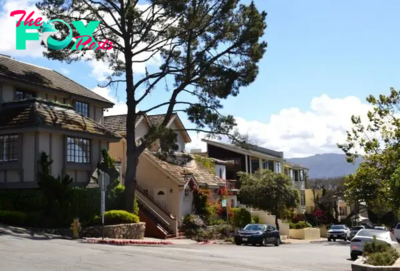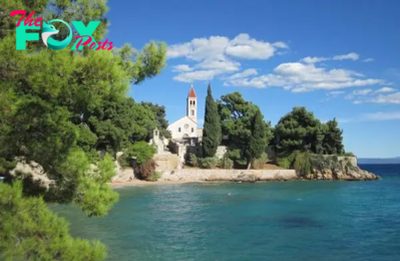Travel
Best Time to Visit Stockholm: Month-by-Month Guide
Most known for its stunning old town and scenic waterside setting, Stockholm is built atop a sprawling archipelago in the Baltic Sea. Each year, millions visit Sweden’s cool capital to explore its many art galleries, museums and islands.
To make the most of its gorgeous green spaces and sparkling waterways, the vast majority of visitors head here between May and September. This is when the weather is warmest, the days are longest and you can actually see the sun shining! Winter too has its charms as the cold, dark days are brightened up by cosy Christmas markets and the possibility of snowfall over Gamla Stan.
To help you plan your trip to the ‘Venice of Scandinavia’, let’s take a look at what its climate is like each month. We’ll also cover what cultural events are going on and when it is more or less expensive to visit.
Contents:
What’s the Weather Like in Stockholm?

Lying on the country’s southeast coast, Stockholm has a humid continental climate with four distinct seasons. Despite its northern location, temperatures remain quite mild throughout the year and its low level of precipitation is pretty evenly distributed across the months.
While winters are dark and cold with snow sometimes falling, temperatures average around 20 to 22°C (68 to 71°F) in summer. June and July also have up to 18 hours of daylight for you to stroll about or swim in the sea.
Although the days are shorter and there is less sunshine, both the cooler spring and autumn months are also quite pleasant in Stockholm. This is either when the flowers in its parks are blooming or all the trees’ leaves have a radiant golden hue to them.
Best months to visit Stockholm

As the weather is best, May through September is the peak tourist season in Stockholm. Aside from ambling about the center, you can hike, cycle and sail around the archipelago or enjoy outdoor events and music festivals. While a lot is going on, this is the most expensive and crowded period to visit.
Despite the freezing temperatures and very short days, winter can also be magical as lights and decorations are strung up and there is a very cosy atmosphere everywhere inside. If it snows, Gamla Stan looks even more picturesque if that’s possible! You can also ice skate or sip Glogg wine and buy gifts at Skansen’s cheery Christmas markets.
Stockholm in January

After the Christmas holidays and New Year’s Eve celebrations are over, January is one of the quietest months tourist-wise in Stockholm. With temperatures often dropping below freezing at night and there being just 1 hour of sunshine a day, most people stay away. The holiday lights and decorations usually stay up though for the first couple of weeks with both airfares and hotels also being cheaper.
While conditions aren’t great for wandering around the old town, there are no crowds in any of its museums. Be aware though that many close quite early at 5PM. Aside from warming up over Fika – with a coffee and maybe a cinnamon bun – you can also always ice skate or snap photos of the city in the snow.
Stockholm in February

Although there are now a couple more hours of daylight per day, February is still very much the off-season. It still drizzles quite a bit – for 14 days on average – and its skies are usually grey and overcast. Snow can still fall over the capital but is never as thick as further north in the country. Many Swedes go skiing during their ‘sportlov’ or ‘Sports holidays’ in February.
With very few people around, you can visit Stockholm’s Nordic, Viking and Vasa museums to get a better feel for its rich history and culture. If the cold gets too much, you can enjoy hot saunas at Sturebadet or the traditional Satra Brunn spa town. Before Lent begins, bakeries have lots of delicious seasonal treats like cream-filled semlor buns to try.
Stockholm in March

While spring is just around the corner, the days are still very chilly and gloomy in March. On the plus side, it is one of the driest months of the year and there are around 12 hours of daylight each day. You’ll still need to wrap up warm though and spend more time indoors at places like the Royal Palace and Ostermalm Saluhall.
Prices do remain low – like its temperatures – as most tourists are put off by the city’s rather bleak, unwelcoming weather. When the sun is out though, you can take relaxing boat tours around the archipelago or amble about its pretty parks and gardens. You can also catch the end of Djurgardens’ ice hockey season or watch AIK play a thrilling Football match.
Stockholm in April

Before the summer crowds arrive and its hotels become more expensive, April is really not a bad time to visit Stockholm. As there is a lot more sunshine and the flowers are blooming, it is a lovely month to stroll about the Bergius Botanic Garden or Kungstradgarden. Many also explore the Skansen Open-Air Museum or take trips to see Drottningholm Palace.
While flights are pricier during the Easter holidays, there are very few crowds at all its main attractions and museums. Many of these stay open late or host special events for Stockholm Culture Night. The last day of the month also has traditional songs and bonfires take place for Walpurgis Night. Also known as Valborg, this wards of evil and celebrates the passing of spring into summer.
Stockholm in May

With average temperatures rising to 15°C (59°F), the sun shining brightly and days lasting longer, May is when tourists finally return to the city. There is a lively yet laidback feel about the old town with more people now spending time outside. Other than exploring its peaceful gardens and green spaces, it’s well worth taking day trips to Uppsala, Sigtuna or Marifred.
As there are now 8 hours of sunshine and 17 of daylight per day, you have loads of time to cruise about its sparkling waterways. While you’ll still need a coat, cycling about Djurgarden or strolling along the Monteliusvagen are also very pleasant pastimes. The downside is that flights and hotels are much more expensive in May and the centre is way more crowded.
Stockholm in June

June is when summer really starts in the city as almost everyday seems to have one festival or another going on. While it still drizzles a bit for around 10 days on average, that doesn’t put a damper on things. Airfares and accommodation prices are higher though and queues do form at some of its main museums.
All its exciting, interesting events more than make up for this however. Besides taking part in its Sweden National Day celebrations, you can run the Stockholm Marathon or enjoy tasty treats at A Taste of Stockholm. Traditional dances, music and food all celebrate the summer solstice with Midsummer being a massive event in this part of the world.
What’s more, the Sweden Rock Festival, Lollapalooza Stockholm and Department Festival all have incredible music acts to listen to. From June through September, dozens of free dance, music and theater shows are also put on for its Parkteatern summer program.
Stockholm in July

While July and August are the peak tourist season when prices are highest, the capital empties out for a month after Midsummer. This is when many Stockholmers head to their summer cottages to relax in the pristine nature. As such, fewer events are held despite the center being packed with people, making the most of the good weather.
With its sunny days seeming almost endless, you can suNBAthe on the beach or swim, kayak and sail about its waters. Visiting the Bjorno Nature Reserve or seaside resort of Sandhamn is particularly lovely though they both will be quite busy. As the humidity rises at the end of the month, July actually sees the most amount of rain in the year.
Stockholm in August

With most locals now back from their summer holiday, August is by far the busiest month in Stockholm. Most people spend a lot of time in its picturesque parks or out on its islands and cruising about its countless waterways. All kinds of outdoor concerts, theater performances and film screenings only add to its already lively ambience.
While there is definitely a great vibe about Gamla Stan and Grona Lund, prices remain high with the days also starting to shorten a bit. The humidity also means that rain showers occur maybe 13 days of the month. That doesn’t stop people from partying at Pride or enjoying all the fun events put on for Stockholm’s Culture Festival.
Stockholm in September

As the summer holidays are over and the kids are back in school, September in Stockholm is a much quieter and cheaper time to visit. While averages of 15°C (59°F) are still great for exploring the old town, the sun shines a lot less as autumn sets in. All its parks and gardens look absolutely incredible with their fiery fall colors making for some fantastic photos.
With plenty of daylight hours in which to explore, you can take boat tours of the archipelago or amble around the Skansen Open-Air Museum. There are also both the Stockholm Design and Stockholm Beer & Whisky weeks to attend. The country’s ice hockey league also starts up again while Parkteatern puts on the last of its concerts and plays.
Stockholm in October

With the days shortening and the weather turning colder, fewer people visit Sweden’s capital in October. If you’re looking for some deals, it’s not a bad time to go as accommodation is cheaper and attractions like the Vasa Museum and Royal Palace are less crowded. The parks and gardens at Djurgarden and Drottningholm Palace also look epic thanks to their amazing autumnal foliage.
Other than wandering about Gamla Stan or Millesgarden, you can catch some fabulous acts at the Stockholm Jazz Festival. Its Craft Week also has some interesting exhibitions to check out while the world’s top Tennis players all battle it out at the Nordic Open. The Grona Lund amusement park is also delightfully decorated for Halloween with scary parades taking place before its haunted houses.
Stockholm in November

November is even quieter in the city as most tourists are put off by the worsening weather. Temperatures drop to just 5°C (41°F) with it also raining for 17 days on average. Aside from wrapping up warm, you’ll want to spend more time indoors at attractions such as ABBA The Museum or Fotografiska Stockholm. Prices are lower though before the holiday season.
With the sun now peeking through the clouds for just 1 hour a day, November is often quite a bleak month in Stockholm. You can, however, watch an action-packed Game of Bandy – a traditional winter sport – or enjoy its International Film Festival. Later on in the month, snow may fall with Skansen’s Christmas markets bringing some much-needed cheer to the capital.
Stockholm in December

The darkest month of the year, December has just 6 hours of faint daylight a day for you to explore the city in. As temperatures also often fall below freezing at night, everyone retreats inside or wears big coats when out and about. It also drizzles a bit for around 18 days with snow sometimes coating the capital too. Many monuments and buildings are magically lit up for its Nobel Week Lights Festival.
Candlelit processions and choir performances also celebrate the ancient mythological figure of Lucia; the bringer of light in the dark Swedish winters. Otherwise there are fun Christmas markets to peruse and, of course, colourful fireworks displays and concerts for New Year’s Eve. While prices do increase a bit, December can be a memorable time to visit if you want to experience a cold but hopefully snowy Christmas in Scandinavia.
-
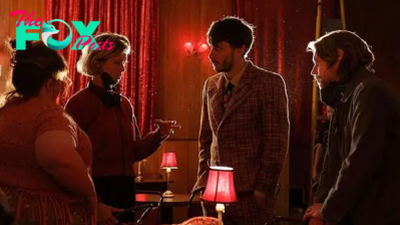
 Travel1d ago
Travel1d agoExplore the Filming Locations of Baby Reindeerin UK and Edinburgh
-
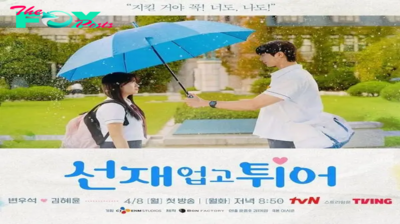
 Travel1d ago
Travel1d agoTravel to the Stunning Lovely Runner Shooting Locations Across Korea
-

 Travel2d ago
Travel2d agoChina Extends Visa-Free Travel to 12 Countries Till 2025
-

 Travel5d ago
Travel5d agoExplore These Stunning Beach Resorts Near Kuala Lumpur in 2024
-

 Travel6d ago
Travel6d agoThe First AI Travel and Hospitality Influencer is Here
-

 Travel1w ago
Travel1w ago12 Best Things to do in Korcula Island, Croatia
-

 Travel1w ago
Travel1w agoHow Moraine Lake’s Turquoise Waters Are Captivating Travelers
-
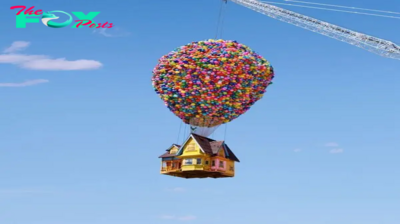
 Travel1w ago
Travel1w agoAirbnb Introduces New Icons Category Including Up House and Ferrari Museum








